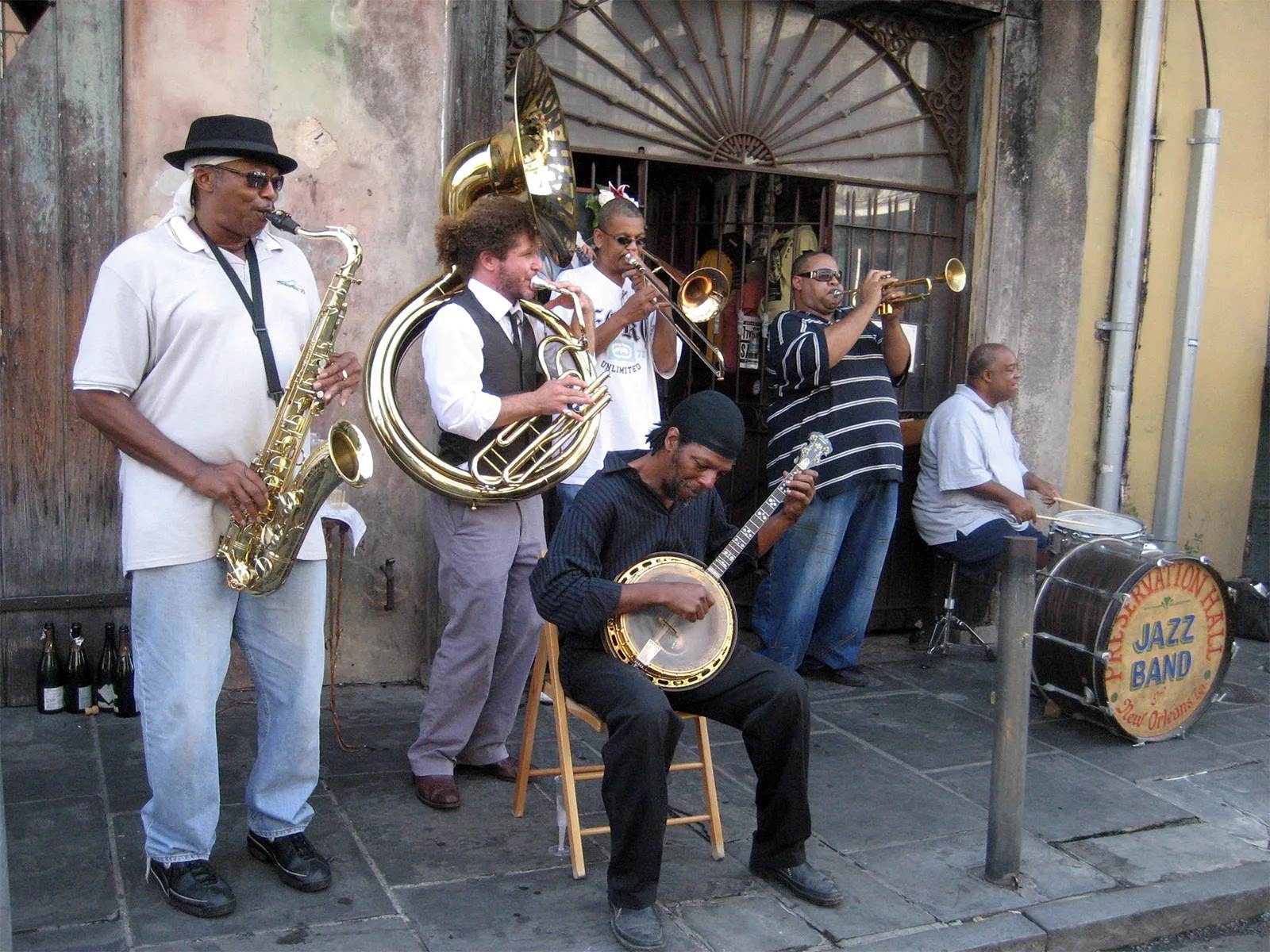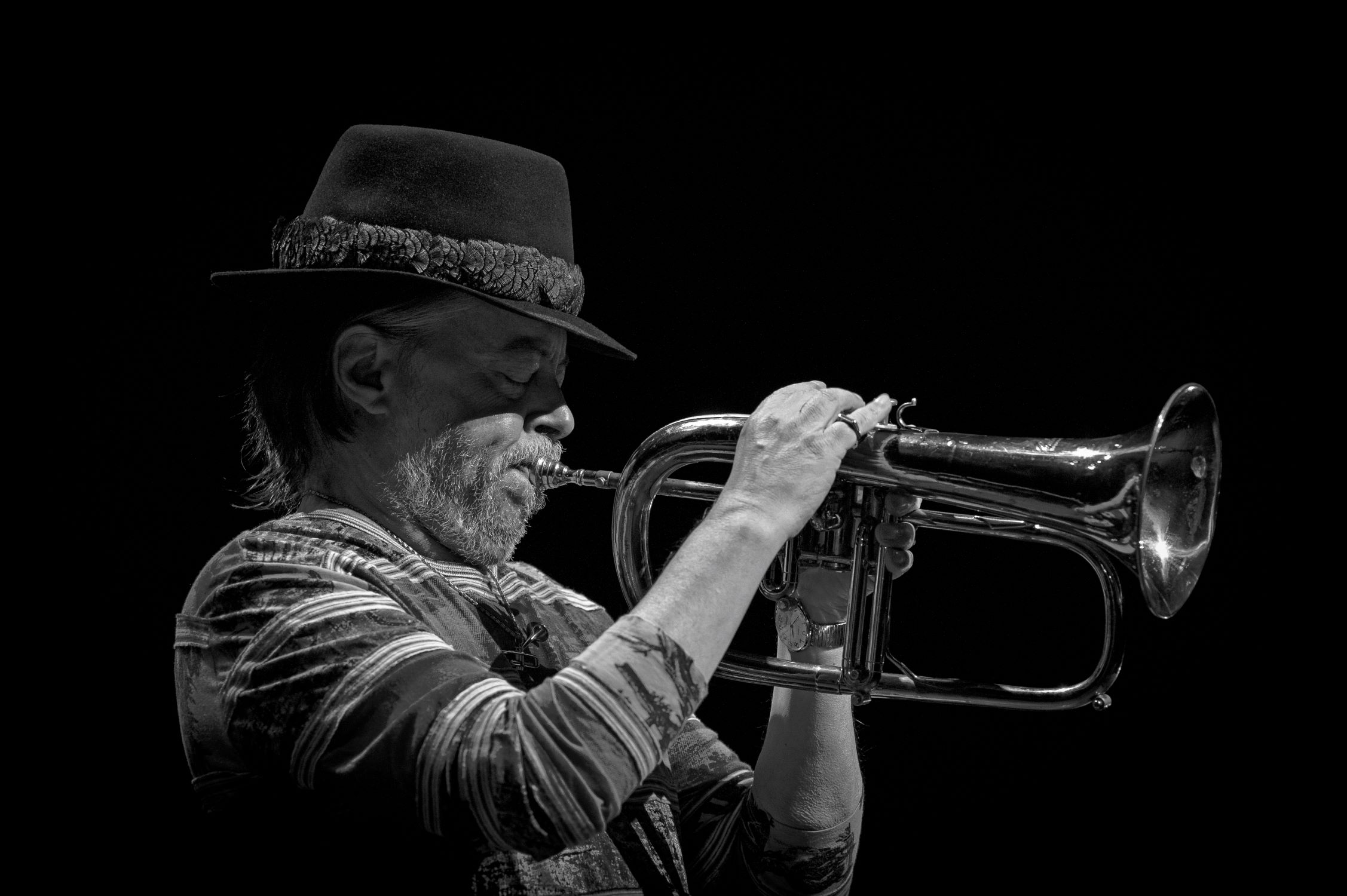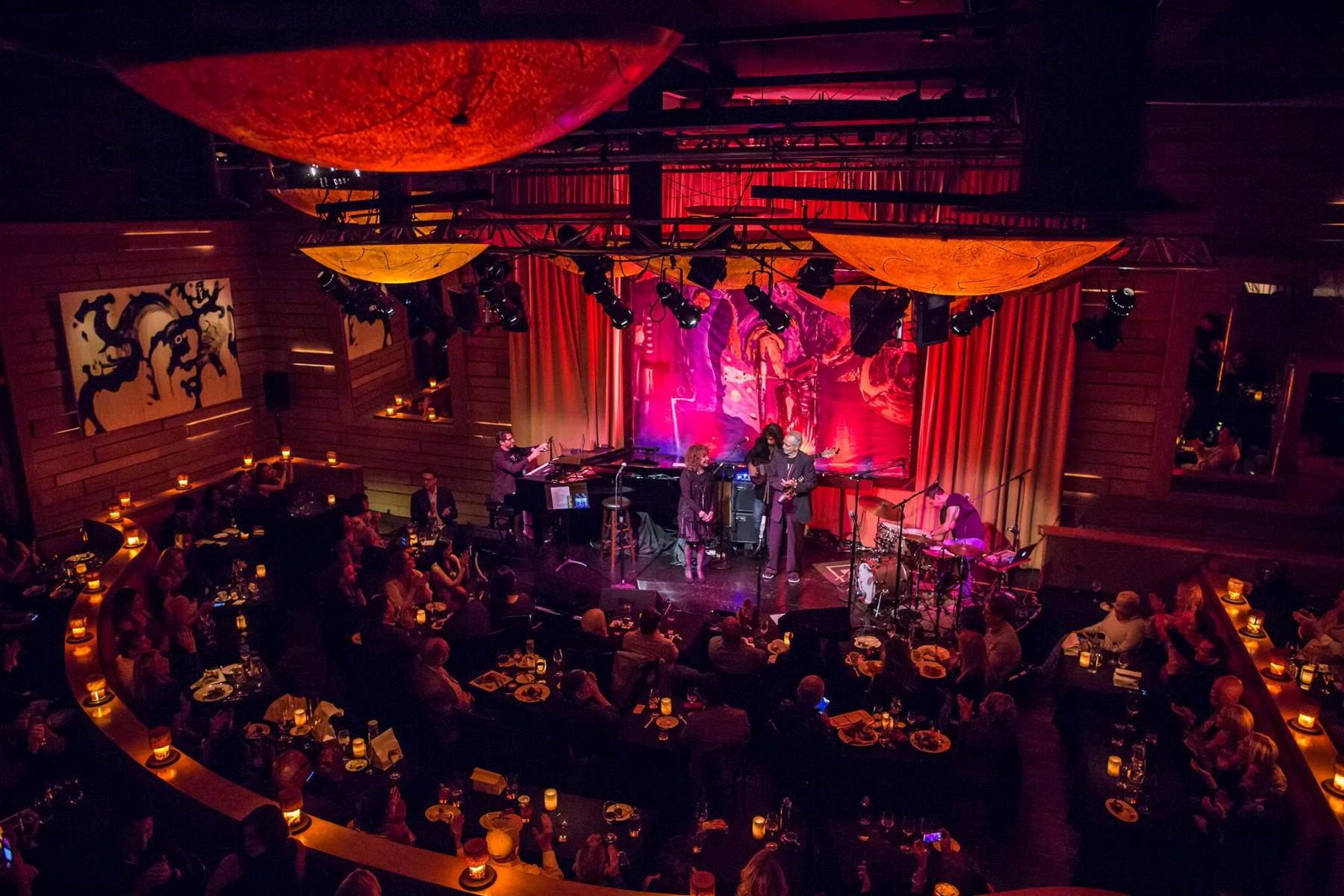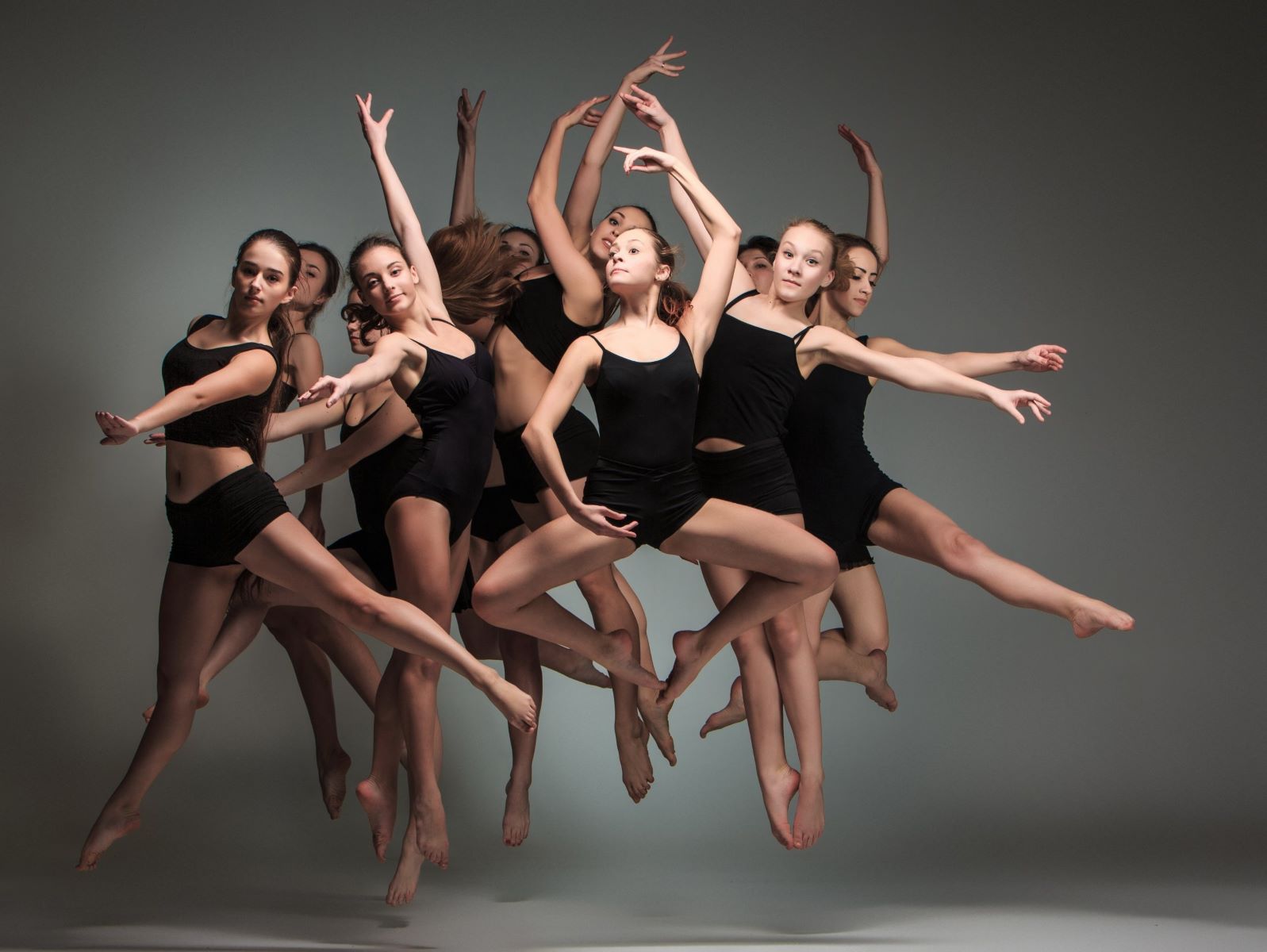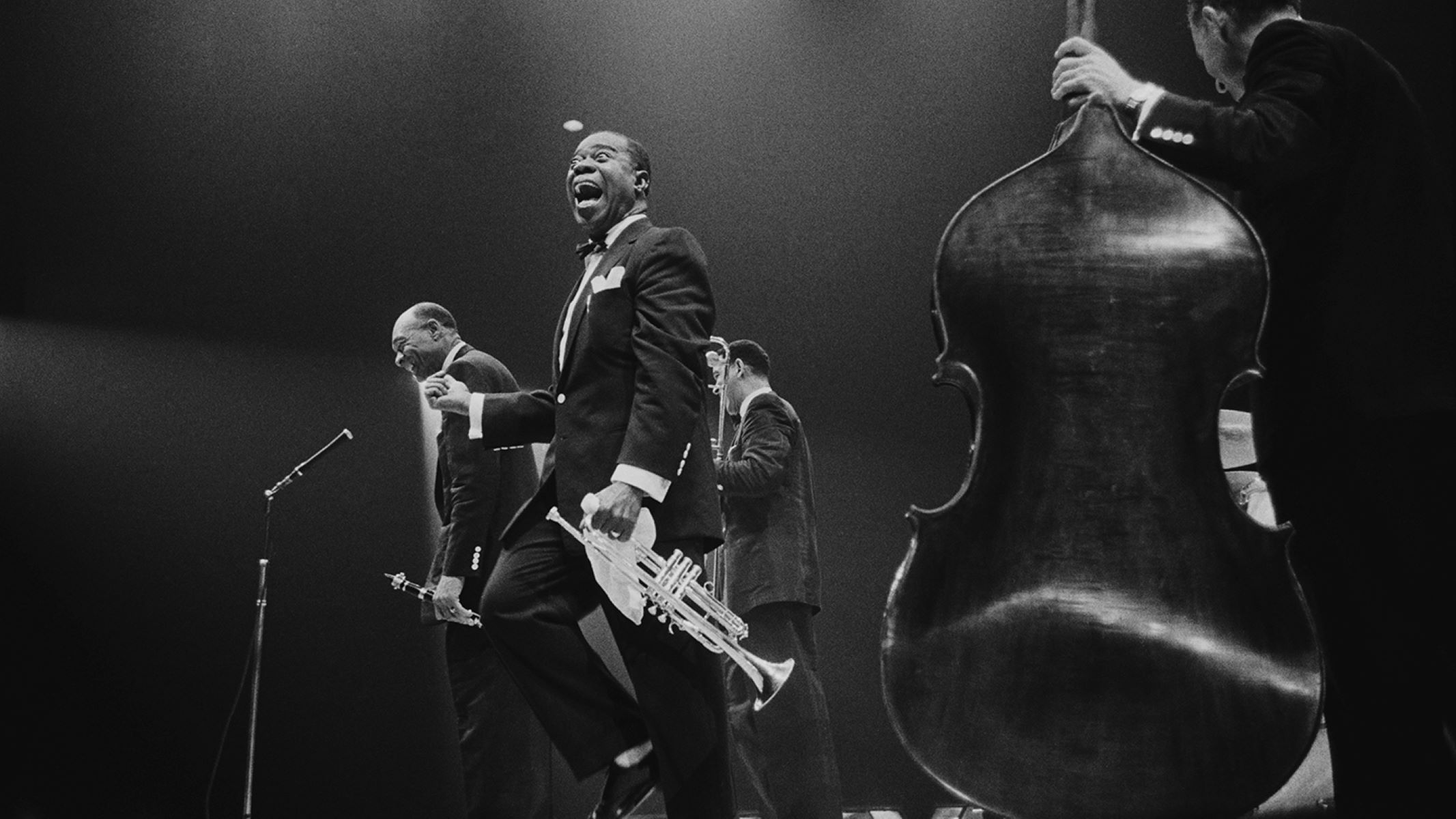

Jazz
What Is The Meaning Of Jazz
Modified: January 22, 2024
Discover the true meaning of Jazz and its evolution throughout history. Explore the origins, styles, and influential artists in this captivating genre. Unleash your love for Jazz today
(Many of the links in this article redirect to a specific reviewed product. Your purchase of these products through affiliate links helps to generate commission for AudioLover.com, at no extra cost. Learn more)
Table of Contents
Introduction
Jazz is a music genre that originated in the late 19th and early 20th centuries in African American communities in the United States. It is characterized by its improvisation, syncopation, and rhythmic complexity, making it a unique and dynamic art form. With its roots in blues, ragtime, and African musical traditions, jazz has evolved and branched out into various styles and subgenres, leaving an indelible mark on the world of music.
Jazz is not just a genre of music; it is a cultural movement that reflects the social, political, and artistic changes of its time. It emerged in the era of racial segregation, when African Americans faced widespread discrimination and were marginalized from mainstream society. Jazz provided a platform for these artists to express their emotions, experiences, and creativity freely.
Unconstrained by the boundaries of traditional European classical music, jazz offers musicians the freedom to improvise and create unique interpretations of melodies and harmonies. This improvisational aspect is what sets jazz apart from other genres, as it encourages spontaneous expression and collaboration among musicians.
Throughout its history, jazz has been shaped by countless talented and innovative artists who have left an enduring influence on the genre. From Louis Armstrong and Duke Ellington to Miles Davis and John Coltrane, these jazz legends have pushed the boundaries and redefined what is possible in music.
Today, jazz continues to thrive and evolve, with modern musicians incorporating elements of hip-hop, rock, and electronic music into their compositions. This fusion of styles reflects the changing musical landscape and the ongoing experimentation within the jazz community.
Despite its niche status in popular culture, jazz remains a symbol of freedom, creativity, and artistic expression. It is a genre that celebrates individuality while fostering collaboration and collective improvisation. To truly understand jazz is to experience the energy and passion that radiates from the stage, as talented musicians come together to create something truly extraordinary.
In this article, we will delve into the origins, characteristics, instruments, styles, and influential figures of jazz. We will also explore how jazz has influenced other genres and discuss the current trends in the world of jazz. Join us on this journey as we unravel the meaning of jazz and celebrate the enduring legacy of this remarkable art form.
Origins of Jazz
Jazz emerged in the late 19th and early 20th centuries in the African American communities of New Orleans, Louisiana. It was born out of a blend of musical influences, including African rhythms, European classical music, and the blues. The unique cultural melting pot of New Orleans, with its diverse population and vibrant music scene, played a crucial role in the development of this groundbreaking genre.
One key factor in the birth of jazz was the tradition of call-and-response, a musical practice that originated in African music. This technique involves a lead vocalist or instrumentalist presenting a musical motif, followed by a response from the rest of the musicians or the audience. Call-and-response became a fundamental element of jazz, allowing for improvisation and dynamic interaction between musicians.
Another influence on jazz was the blues, a genre that evolved from the African American experience of slavery and oppression. The blues featured repetitive chord progressions, soulful vocals, and lyrics expressing pain, longing, and resilience. Jazz artists adopted the expressive qualities of the blues, infusing their music with emotional depth and individual expression.
The influence of European classical music can be seen in the harmonic structure and formal elements of jazz. Jazz musicians began incorporating chords and melodic ideas from classical compositions, adding complexity and sophistication to the genre. This fusion of African rhythms, the blues, and European classical music laid the foundation for the innovative and distinctive sound of jazz.
New Orleans, known for its vibrant nightlife and bustling music scene, became the birthplace of jazz. Musicians would gather in clubs, bars, and street corners to jam and experiment with their musical ideas. The city’s rich cultural heritage, with its African, French, Spanish, and Caribbean influences, provided a fertile ground for musical innovation and cross-pollination.
One of the key figures in the early development of jazz was cornetist and bandleader Buddy Bolden. Bolden’s band was known for their energetic and improvised performances, which laid the groundwork for the improvisational nature of jazz. Other notable musicians from New Orleans, such as Jelly Roll Morton and Louis Armstrong, contributed to the popularization and refinement of jazz as it spread beyond the city’s borders.
As jazz gained popularity, it began to evolve and branch out into different styles and subgenres. From the swinging rhythms of the big band era to the complex harmonies of bebop and the soulful melodies of cool jazz, jazz continued to evolve and adapt to the changing times.
The origins of jazz reflect the cultural and musical diversity of its birthplace, New Orleans. It is a genre that celebrates innovation, improvisation, and collaboration, while serving as a testament to the resilience and artistic expression of the African American community.
Characteristics of Jazz
Jazz is a genre characterized by a unique set of musical qualities that set it apart from other styles of music. These characteristics contribute to the improvisational nature, rhythmic complexity, and vibrant energy that define jazz.
One of the defining characteristics of jazz is its improvisation. Unlike other genres, jazz allows musicians to spontaneously create melodies, harmonies, and rhythms during performances. Improvisation gives jazz its sense of freedom, individuality, and creativity, as musicians express their musical ideas in real-time, adapting to the flow of the music and interacting with other musicians.
The use of syncopation is another hallmark of jazz. Syncopation refers to accenting beats that are not traditionally emphasized in a specific musical phrase or rhythm. This rhythmic complexity adds a sense of groove and unpredictability to jazz, creating a lively and dynamic sound.
Swing rhythm is another important characteristic of jazz, particularly associated with the big band era. Swing refers to a rhythmic feel that creates a sense of forward motion and a relaxed, propulsive groove. It involves playing notes slightly off the beat, giving the music its distinctive swing feel.
Jazz also features complex harmonies and chord progressions. In addition to the traditional major and minor scales, jazz musicians explore extended chords, such as sevenths, ninths, and altered chords. This harmonic complexity provides a rich and colorful palette for improvisation and adds depth to the overall sound of jazz.
Another characteristic of jazz is the use of call-and-response patterns. Originating from African musical traditions, call-and-response involves a musical phrase or idea being presented by one musician and then answered or elaborated upon by another. This interaction between musicians creates a sense of dialogue and collaboration, making jazz a highly interactive and engaging art form.
Jazz is also known for its emotional expressiveness. Whether it’s the mournful tones of a blues ballad or the exuberant energy of an up-tempo swing tune, jazz allows musicians to convey a wide range of emotions through their playing. This emotional depth and personal expression are key elements that make jazz so powerful and relatable to listeners.
Lastly, jazz embraces the concept of collective improvisation. In addition to solo improvisations, jazz often features ensemble improvisation, where multiple musicians in a band contribute their own musical ideas simultaneously. This collective improvisation requires careful listening, interplay, and communication between the musicians, resulting in a truly collaborative and dynamic musical experience.
These characteristics of improvisation, syncopation, swing, complex harmonies, call-and-response, emotional expressiveness, and collective improvisation are what make jazz such a unique and captivating genre. They reflect the essence of jazz as a constantly evolving and expressive art form that continues to inspire and captivate audiences around the world.
Jazz Instruments
Jazz is a genre that encompasses a wide range of instruments, each contributing its own unique sound and playing style to the intricate tapestry of jazz music. While there are several instruments commonly associated with jazz, the genre is known for its flexibility and openness to experimentation, allowing musicians to incorporate instruments from various musical traditions. Here are some of the key instruments typically found in jazz:
- Trumpet: The trumpet is a brass instrument with a bright and piercing sound. It is often the lead instrument in jazz ensembles, known for its ability to cut through the texture and deliver soaring melodies.
- Saxophone: The saxophone is a versatile instrument that comes in various sizes, including soprano, alto, tenor, and baritone. Each saxophone has a distinctive sound and range, adding richness and depth to jazz compositions and solos.
- Piano: The piano is a cornerstone instrument in jazz, providing harmonic support and acting as a solo instrument. Jazz pianists use their knowledge of chords and improvisation to create complex and intricate melodies.
- Bass: The bass, either an upright bass or an electric bass guitar, provides the foundation and rhythm for jazz music. It lays down the groove, keeping the tempo and providing a melodic and harmonic anchor for the other instruments.
- Drums: The drums are essential for establishing the rhythmic backbone of jazz. With its various components, such as the snare drum, cymbals, hi-hat, and bass drum, the drummer provides intricate and syncopated rhythms, driving the energy of the music.
- Guitar: The guitar is often featured in jazz as both a rhythm and lead instrument. Jazz guitarists employ techniques such as chord comping, single-note lines, and improvisation to create intricate and melodic solos.
- Trombone: The trombone is a brass instrument with a slide mechanism that allows for smooth glissandos and unique phrasing. It adds a rich and mellow tone to jazz ensembles and is often used in expressive and emotive soloing.
- Clarinet: The clarinet has a warm and expressive tone and is well-suited for both melodic lines and improvisation. In early forms of jazz, the clarinet was a prominent instrument, often used in frontline melodies and solos.
- Vibraphone: The vibraphone is a percussive instrument consisting of metal bars that produce a bell-like sound when struck with mallets. It adds a unique texture and melodic quality to jazz compositions, often played with intricate harmonic improvisations.
- Flute: While not as commonly associated with jazz as other instruments, the flute has been used by jazz musicians to bring a delicate and airy quality to the music. Its expressive range and ability to play fast passages make it a versatile addition to jazz ensembles.
In addition to these instruments, jazz is known for its willingness to incorporate unconventional and non-traditional instruments into its compositions. This openness to experimentation has led to the inclusion of instruments such as the accordion, violin, harmonica, and even non-traditional objects that produce unique sounds.
Overall, the diverse range of instruments found in jazz allows for endless possibilities and artistic expression. Whether it’s the brass section blazing through energetic solos, the delicate melodies of a piano, or the rhythmic complexity of the drums, each instrument adds its own character to the vibrant world of jazz music.
Jazz Styles and Subgenres
Jazz is a genre that has continuously evolved and diversified since its inception. Over the years, various styles and subgenres of jazz have emerged, each with its own unique characteristics and influences. These different styles reflect the cultural, social, and artistic shifts of their respective eras. Here are some of the key jazz styles and subgenres:
- Traditional Jazz: Also known as New Orleans Jazz or Dixieland, this style originated in the early 20th century. It emphasizes collective improvisation and features a frontline of trumpet, clarinet, and trombone, accompanied by a rhythm section.
- Swing: Developed in the 1930s and 1940s, Swing music features a strong emphasis on rhythm and a well-defined beat. It is characterized by big bands, with sections of saxophones, trumpets, and trombones. Swing music became synonymous with popular dance and played a pivotal role in the cultural landscape of the time.
- Bebop: Bebop emerged in the 1940s as a reaction against the commercialization of Swing music. It is characterized by fast tempos, complex harmonies, and intricate improvisation. Bebop placed a greater emphasis on individual expression and the virtuosity of small groups, with musicians like Charlie Parker and Dizzy Gillespie leading the way.
- Cool Jazz: Developed in the late 1940s and 1950s, Cool Jazz is characterized by a relaxed and mellow sound. It features softer dynamics, slower tempos, and a focus on melodic lines. Artists such as Miles Davis and Dave Brubeck helped popularize this style.
- Hard Bop: Emerging in the 1950s, Hard Bop brought a stronger emphasis on blues and gospel influences into jazz. It featured soulful melodies, hard-driving rhythms, and extended improvisations. Artists like Art Blakey and Horace Silver played a significant role in defining this style.
- Modal Jazz: Modal Jazz, popularized by Miles Davis in the late 1950s and early 1960s, focused on static harmonies and extended improvisations over modal scales. It moved away from complex chord progressions, allowing for greater freedom and exploration of melodic ideas.
- Fusion: Fusion emerged in the late 1960s and fused elements of jazz with rock, funk, and other genres. It incorporated electric instruments, synthesizers, and expanded improvisations. Artists like Herbie Hancock and Chick Corea are known for their contributions to this genre.
- Latin Jazz: Latin Jazz combines elements of jazz with Latin American rhythms and instruments. It blends genres such as Afro-Cuban, Brazilian, and Caribbean music, creating a vibrant and rhythmic fusion. Pioneers like Dizzy Gillespie and Tito Puente helped popularize this genre.
- Contemporary Jazz: Contemporary Jazz refers to the current trends and developments within the genre. It embraces a wide range of styles and influences, incorporating elements from various genres such as hip-hop, electronic music, and world music. It is characterized by its fusion of traditions and experimentation.
These are just a few examples of the many styles and subgenres that make up the diverse world of jazz. Each style carries its own unique flavor, reflecting the artistic vision and cultural influences of its time. Jazz continues to evolve and adapt, pushing boundaries and inspiring musicians and listeners alike.
Influence of Jazz on Other Genres
Jazz is a genre that has had a profound impact on the development of music in the 20th century and beyond. Its improvisational nature, rhythmic complexity, and harmonic innovations have influenced numerous other genres, pushing boundaries and inspiring musicians from diverse musical backgrounds. Here are some of the key genres that have been influenced by jazz:
- Rock ‘n’ Roll: The emergence of rock ‘n’ roll in the 1950s drew heavily from the energy and rhythm of jazz. Artists like Chuck Berry, Little Richard, and Elvis Presley incorporated elements of swing, blues, and improvisation into their music, giving birth to a new era of popular music.
- Funk: Funk music, popularized by artists like James Brown and George Clinton, took inspiration from jazz’s emphasis on rhythm and syncopation. The use of complex grooves, intricate bass lines, and extended improvisations in funk music can be traced back to jazz influences.
- Soul: Soul music, with its emotive vocals and deep grooves, also owes a debt to jazz. Artists like Ray Charles and Aretha Franklin incorporated jazz techniques, such as improvisation and melodic embellishments, into their soulful performances, adding a touch of sophistication to the genre.
- Hip-Hop: Jazz has been a significant influence on the development of hip-hop music. Hip-hop artists often sample jazz records, incorporating elements of jazz melodies and rhythms into their beats. The improvisational spirit of jazz is also reflected in the freestyle rap techniques and experimentation within the genre.
- Contemporary Pop: Jazz’s focus on melodic expression and harmonic complexity has influenced contemporary pop music. Artists like Amy Winehouse, Norah Jones, and Harry Connick Jr. have incorporated jazz elements into their pop compositions, bringing a sense of sophistication and artistry to mainstream music.
- Electronic Music: Jazz’s influence can also be found in the realm of electronic music. Electronic artists often experiment with jazz-inspired harmonies, improvisations, and rhythmic complexity, creating a fusion of genres that stimulates both the mind and the dance floor.
- World Music: Jazz’s spirit of collaboration and its openness to different cultural influences have made it a natural fit for the fusion of global musical styles. Jazz has influenced world music genres such as Afro-Cuban, Brazilian, and Indian music, resulting in exciting cross-cultural collaborations and inventive new sounds.
The influence of jazz on these genres is a testament to its ability to transcend boundaries and inspire innovation. Jazz’s emphasis on individuality, improvisation, and musical exploration has permeated the fabric of modern music, providing a rich foundation for artists to express themselves and push artistic boundaries.
While jazz has influenced a vast array of genres, it is important to note that each genre takes its own unique approach to incorporating jazz elements, resulting in a diverse musical landscape. The ongoing influence of jazz serves as a reminder of its enduring legacy and its relevance as a catalyst for musical creativity.
Jazz Legends and Influential Figures
Jazz has been shaped and propelled forward by countless talented musicians throughout its history. These jazz legends have not only left an indelible mark on the genre but have also influenced the course of music as a whole. Their innovative playing styles, compositions, and groundbreaking techniques have set the standard for generations to come. Here are some of the jazz legends and influential figures who have made a significant impact:
- Louis Armstrong: Known as “Satchmo,” Louis Armstrong was one of the most influential figures in jazz history. His innovative trumpet playing, distinctive voice, and charismatic stage presence revolutionized the genre. Armstrong’s virtuosity, improvisational skills, and contributions as a vocalist made him a true jazz icon.
- Duke Ellington: Duke Ellington was a prolific composer, pianist, and bandleader who brought a sophisticated and orchestral approach to jazz. His big band compositions such as “Take the A Train” and “Mood Indigo” are considered jazz classics. Ellington’s ability to seamlessly blend different musical styles and his commitment to artistic integrity left an enduring impact on the genre.
- Miles Davis: Miles Davis was a trailblazer in the world of jazz, constantly pushing boundaries and reinventing himself throughout his career. His album “Kind of Blue” is widely regarded as one of the greatest jazz recordings of all time. Davis’s use of modal jazz and his collaborations with groundbreaking musicians like John Coltrane and Herbie Hancock transformed the landscape of jazz.
- John Coltrane: John Coltrane was a visionary saxophonist and composer who pushed the boundaries of jazz with his innovative approach to harmonic improvisation. His album “A Love Supreme” is considered one of the most important recordings in jazz history. Coltrane’s spiritual and impressionistic style continues to inspire musicians across genres.
- Ella Fitzgerald: Ella Fitzgerald, known as the “First Lady of Song,” possessed a voice that was both powerful and tender. Her scat singing and unparalleled vocal range captivated audiences worldwide. Fitzgerald’s interpretations of the Great American Songbook and her collaborations with jazz luminaries like Duke Ellington and Louis Armstrong solidified her status as a jazz legend.
- Charlie Parker: Charlie Parker, also known as “Bird,” was a pioneering figure in the development of bebop. His revolutionary saxophone playing, characterized by lightning-fast runs and intricate improvisations, transformed the landscape of jazz. Parker’s virtuosity and innovations continue to shape the playing styles of generations of jazz musicians.
- Thelonious Monk: Thelonious Monk was a pianist and composer who injected a unique sense of dissonance, eccentricity, and humor into jazz. His compositions, such as “Round Midnight” and “Blue Monk,” challenged traditional conventions and expanded the possibilities of jazz harmony. Monk’s idiosyncratic playing style and unconventional approach have made him one of the most influential figures in jazz.
- Sarah Vaughan: Sarah Vaughan, known as the “Divine One,” was a remarkable vocalist with a mesmerizing tone and impeccable technique. Her mastery of melodic improvisation and her ability to effortlessly move between different genres of music set her apart as a true jazz legend. Vaughan’s influence can be felt in the performances of countless contemporary jazz vocalists.
- Count Basie: Count Basie was a renowned pianist, composer, and bandleader who brought a distinctive sense of swing to jazz. His band, the Count Basie Orchestra, was known for its impeccable rhythm section and captivating arrangements. Basie’s contributions to the swing era and his ability to create an infectious groove continue to inspire musicians around the world.
- Billie Holiday: Billie Holiday, also known as “Lady Day,” possessed a voice that exuded raw emotion and vulnerability. Her interpretations of jazz standards, such as “Strange Fruit” and “God Bless the Child,” remain iconic. Holiday’s unique phrasing, emotional depth, and ability to tell a story through her singing have made her one of the most revered jazz vocalists of all time.
These are just a few of the many jazz legends and influential figures who have left an indelible mark on the genre. Their innovations, unique playing styles, and contributions have shaped the course of jazz and continue to resonate with audiences and musicians alike. Their enduring legacy serves as a constant source of inspiration and a testament to the enduring power of jazz music.
Modern Jazz Trends
Jazz is a genre that has continued to evolve and adapt to the changing times. In the contemporary jazz landscape, there are several emerging trends and developments that reflect the fusion of traditional jazz elements with modern influences. These trends reflect the ongoing exploration and experimentation within the genre. Here are some of the key modern jazz trends:
- Fusion with Contemporary Genres: Modern jazz musicians are increasingly incorporating elements from contemporary genres such as hip-hop, electronic music, and R&B. This fusion of styles creates a melting pot of sounds, blending traditional jazz improvisation with new textures and electronic beats.
- Genre-blurring and Cross-pollination: Jazz today is characterized by an openness to cross-pollination with other genres. Artists are breaking down musical barriers, fusing jazz with world music, funk, rock, and classical influences. This experimentation leads to the creation of unique, genre-defying sounds that defy categorization.
- Exploration of Odd Time Signatures: Modern jazz musicians are increasingly exploring complex rhythmic structures and odd time signatures. This exploration adds a fresh and intricate layer to the music, challenging traditional notions of rhythm and groove.
- Revival of Traditional Jazz: Alongside the push for innovation, there is a renewed interest in the preservation and revitalization of traditional jazz styles. Artists are revisiting the sound and techniques of early jazz, keeping the tradition alive while adding their unique interpretations and perspectives.
- Emphasis on Collective Improvisation: Many modern jazz ensembles are placing a renewed emphasis on collective improvisation, echoing the spirit of early jazz. Musicians are finding new ways to interact and communicate in real-time on stage, creating dynamic and spontaneous performances.
- Integration of Contemporary Technology: Modern jazz musicians are embracing technology to enhance their performances. From integrating electronic instruments and effects to utilizing digital recording and production techniques, technology is becoming an integral part of the jazz music-making process.
- Socially Conscious Jazz: Jazz has always been a genre that reflects the socio-political climate, and modern jazz is no exception. Artists are using their music as a medium for social commentary, addressing issues such as racial injustice, environmental concerns, and human rights. This socially conscious approach adds depth and relevance to the modern jazz landscape.
- Exploration of Nontraditional Instruments: Modern jazz musicians are expanding the sonic palette by incorporating nontraditional instruments and objects into their compositions and performances. From unconventional percussion instruments to electronics and found objects, these innovative additions contribute to the ever-evolving sound of modern jazz.
- Diversity and Inclusion: There is a growing recognition and celebration of diversity within the modern jazz community. Artists from different cultural backgrounds and gender identities are making their voices heard, bringing fresh perspectives and strengthening the global reach of jazz.
- Global Jazz Community: Thanks to advancements in technology and increased cultural exchange, the modern jazz community has expanded globally. Musicians from all corners of the world are collaborating, sharing ideas, and incorporating their diverse musical traditions into jazz, fostering a rich and vibrant global jazz scene.
These modern jazz trends demonstrate the genre’s ability to evolve and adapt while maintaining its essence. The fusion of genres, exploration of new sounds, and commitment to artistic innovation ensure that jazz remains relevant and exciting in the 21st century. As the jazz landscape continues to evolve, these trends shape the future trajectory of the genre and contribute to its ongoing growth and reinvention.
Jazz as an Expression of Freedom
Jazz has long been celebrated as a genre that embodies the spirit of freedom and self-expression. From its origins in African American communities to its global reach today, jazz has served as a powerful vehicle for cultural, social, and artistic liberation. Here’s why jazz is often seen as an expression of freedom:
Breaking Musical Boundaries: Jazz is inherently rebellious in its nature. It defies traditional musical structures and conventions, allowing for improvisation and spontaneous creativity. Unlike other genres that rely heavily on sheet music and predetermined compositions, jazz musicians have the freedom to take risks, explore new harmonies, and create unique interpretations of melodies. This musical freedom empowers artists to express their innermost emotions and ideas without restraint.
Embracing Individuality: Jazz celebrates individuality and encourages musicians to express their unique voices. Jazz musicians are encouraged to find their own sound, to develop their own distinctive playing style and improvisational language. The genre embraces diversity and recognizes that every musician brings their own personal experiences and influences to their music. This emphasis on individual expression fosters a sense of empowerment and freedom within the jazz community.
Improvisation as a Tool for Freedom: At the heart of jazz lies improvisation, a musical act that epitomizes freedom. Improvisation allows musicians to spontaneously create melodies, harmonies, and rhythms in the moment, reacting to the energy and inspiration of the performance. It is a form of musical conversation and collaboration, enabling musicians to communicate and express their thoughts and emotions freely. Improvisation in jazz is a symbol of liberation, as musicians break free from the constraints of pre-written music and immerse themselves in the sheer freedom of the present moment.
Social and Political Commentary: Jazz has consistently been a platform for social and political commentary. From its early roots in the African American struggle for equality to its role in civil rights movements, jazz has used music as a medium for addressing societal issues and advocating for change. Musicians such as Nina Simone, Charles Mingus, and Max Roach have used jazz to express their frustration with oppression and advocate for justice. Jazz’s ability to convey powerful messages and inspire social awareness reflects its role as a vehicle for personal and collective freedom.
Cultural and Artistic Revolution: Jazz has been at the forefront of cultural and artistic revolution throughout its history. It challenges societal norms and embraces cultural diversity. Jazz has been a vehicle for integrating various musical traditions, from the fusion of African rhythms and European harmonies to the incorporation of global influences. The genre has consistently pushed artistic boundaries, blurring the lines between genres, and inspiring artists in other disciplines. Jazz has provided a platform for artists to explore new modes of expression, contributing to the overall liberation and advancement of arts and culture.
Jazz’s unique ability to convey emotions, challenge norms, promote individuality, and serve as a medium for social and artistic revolution has solidified its reputation as an embodiment of freedom. The genre’s improvisational nature, celebration of individual expression, and its historical role in advocating for social justice make jazz a powerful and poignant expression of personal and collective freedom.
Conclusion
Jazz, with its rich history, diverse styles, and influential figures, stands as a testament to the power of music to evoke emotion, inspire creativity, and reflect the human experience. From its humble beginnings in New Orleans to its global reach and impact, jazz has transcended cultural, social, and artistic boundaries to become a universal language of expression and freedom.
The origins of jazz in African American communities and its subsequent evolution reflect the resilience and creativity of a marginalized group in society. Jazz provided an outlet for self-expression, a means of transcending social barriers, and a platform for cultural pride. It continues to serve as a reminder of the triumph of the human spirit and the strength found in the face of adversity.
The characteristics of jazz, such as improvisation, syncopation, and collective collaboration, make it a dynamic and ever-evolving art form. Jazz’s influence can be felt in genres ranging from rock to hip-hop, showcasing its universal appeal and lasting impact on the musical landscape. Jazz encourages freedom of expression, celebrates individuality, and fosters a sense of creative exploration.
As we explore jazz instruments, styles, and the influential figures who have shaped the genre, it becomes evident that jazz is more than just music. It is a cultural movement, a means of social commentary, and an embodiment of the human spirit. Jazz has played a vital role in shaping the history of music and continues to inspire musicians and audiences alike.
Modern jazz trends demonstrate the genre’s ability to adapt to the changing times while maintaining its core principles. Jazz musicians fuse traditional elements with contemporary influences, break musical boundaries, and address social issues, ensuring that jazz remains a vibrant and relevant art form in the 21st century.
Jazz’s legacy as an expression of freedom is enduring. It represents the freedom to create, to innovate, and to challenge societal norms. Jazz celebrates individuality, embraces cultural diversity, and offers a platform for social and artistic revolution. It serves as a reminder that freedom can be found in the exploration of our individual voices and the ability to connect with others through the universal language of music.
In conclusion, jazz is a genre that transcends borders and speaks to the hearts and minds of people around the world. Its influence is undeniable, its impact immeasurable. Jazz will continue to evolve and inspire, serving as a testament to the power of music to unite, uplift, and liberate the human spirit.




